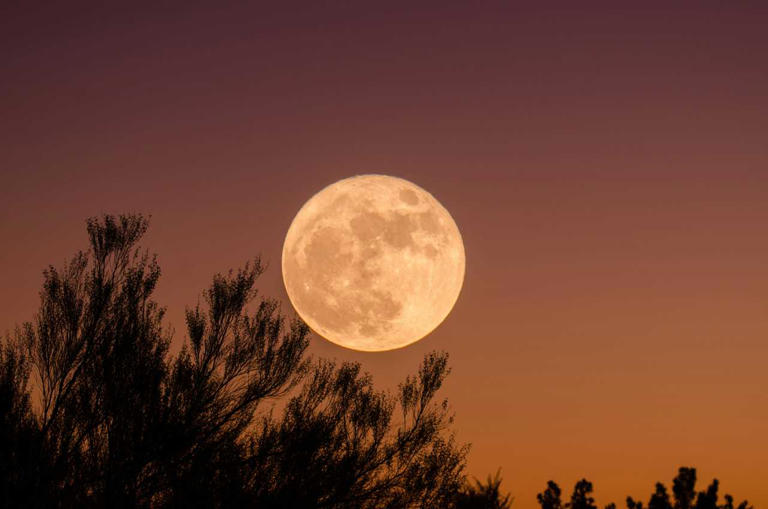World
Beaver Moon to Dazzle Skies: Don’t Miss 2024’s Last Supermoon

Skywatchers are in for a celestial treat as the Beaver Moon, 2024’s final supermoon, graces the skies. This lunar event, marking the November full moon, will appear brighter and larger than usual. The best time to watch is during moonrise on the evening of November 20th, when the moon hovers just above the horizon, creating a breathtaking view.
The final supermoon of 2024 will be visible across the globe on Friday night.
This supermoon will be at its brightest on Friday at 4:29 PM Eastern Time (21:29 GMT).
This lunar event will align with other celestial occurrences, such as the Leonid meteor shower and the Pleiades star cluster.
Here’s what you need to know:
What is a full moon and what is a supermoon?
NASA defines a full moon as the moment when the Moon is precisely 180 degrees opposite to the Sun. Essentially, this alignment places Earth directly between them. During this phase, nearly all of Earth’s satellite is illuminated by sunlight.

A supermoon is an astronomical event where the full moon appears larger and brighter than normal. This occurs when the full moon coincides with its closest approach to Earth in its orbit.
The word “supermoon” was introduced by astrologer Richard Nolle in 1979 to refer to a full moon that appears when the moon is at least 90 percent of its closest distance to Earth.
On the other end of the moon sighting spectrum is the micromoon—this phenomenon occurs when a full moon appears particularly small and dim, as it happens to coincide with its point in orbit farthest from Earth.
What does the Beaver Moon refer to?
This year’s Beaver Moon will be the fourth and final supermoon of 2024. It will appear larger and more luminous as it nears Earth, coming within approximately 361,867 km (225,000 miles) on Thursday.
Nevertheless, it will achieve its full phase on Friday.
Full moons are typically assigned names that reflect natural events occurring during their cycle. As noted by the Old Farmer’s Almanac, these names also have origins in diverse traditions and folklore from Native American and European cultures.
In the Northern Hemisphere, during this season, beavers begin settling into their lodges after storing sufficient food for the winter.
Some refer to it as the Mourning Moon, marking it as the final full moon before the winter solstice. It is also known by other names like the Frost Moon and the Freezing Moon, which are derived from frosts and early snows common during this period of year, especially in northeastern North America.
What are the location and time to watch it?
Supermoons are visible across the globe, which means peak illumination times differ depending on your location.
In India, the moon will reach its peak illumination at 2:58 AM on Saturday (21:29 GMT Friday), while in London, it can be seen around 9:29 PM local time on Friday.
In the Middle Eastern Gulf countries, the moon will light up the sky at 00:29 GMT on Saturday.
What are the ways to observe a supermoon?
A casual stargazer should be able to see the full moon, as long as they’re in the right time zone.
NASA also suggests using binoculars with at least 7x magnification. They note that a magnification of 10x or 15x will offer more detail, although you might need a tripod to keep them steady.
What other astronomical events are occurring?
The peak of the Leonid meteor shower will occur this weekend.
The Leonids are famous for their swift meteors, reaching speeds of up to 70 kilometers per second (44 miles per second). Unlike most meteor showers that originate from comet debris, the Leonids trace back to the Tempel-Tuttle comet.
The Leonids are known for their bright meteors, which may also display a range of colors. NASA reports that approximately every 33 years, Earth observers might experience a Leonid storm, during which the meteor count can soar to hundreds or even thousands per hour based on where you are observing from.
The Pleiades form a distinct star pattern and an open cluster containing over 1,000 stars. Located within the constellation Taurus, they lie about 410 light-years away from Earth.
This year, the full moon’s brightness might obscure most of the stars in the cluster. On Saturday at 1:59 am Eastern Time (06:59 GMT), it will be only 0°6′ away from the Pleiades.
According to Al Jazeera
